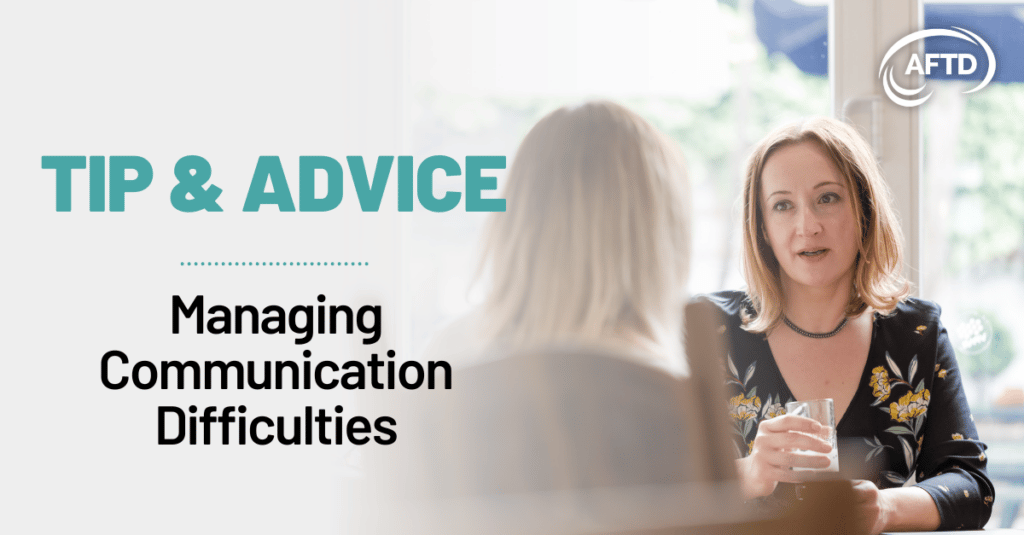Tips and Advice: Managing Communication Difficulties

As FTD progressively affects areas of the brain that control reading, writing, speaking, and understanding language, communicating with the person diagnosed may become much more difficult. While this can be disheartening and stressful, people with FTD and their care partners can use strategies to improve communication together.
A speech-language pathologist can evaluate the communication abilities of the person diagnosed in order to establish a baseline for interventions. The pathologist may recommend speech-language therapy to help maintain or slow the decline of language skills.
To help address communication issues at home, rehearse relevant words, such as names for objects or certain needs, like eating. Care partners and people with FTD might also try rehearsing scripts that cover a range of common situations: for example, ordering a favorite dish at a restaurant, or explaining FTD to a curious stranger.
As communication becomes more difficult, seek out alternative ways to converse, such as using a pencil and paper to write or even draw a response.
If FTD has affected someone’s verbal comprehension, use a mixture of verbal and non-verbal cues. At bedtime, hand the person diagnosed their toothbrush (non-verbal) while also reminding them, “It’s time to brush” (verbal). Be consistent with both your verbal and nonverbal cues so as not to cause distress or confusion.
If you need specific information from the person diagnosed, avoid open-ended questions. For example, don’t ask “What do you want to eat?” when you can offer a choice: “Hot dog or hamburger?” You can also try asking a multiple-choice question in writing.
Finally, be sure to maintain a positive tone and provide encouragement. Becoming audibly and visibly frustrated when the person diagnosed cannot understand you may cause them to become agitated or frustrated. Try your best to maintain your composure – remember, your loved one has a neurodegenerative brain disease; they are not being difficult on purpose.
For more information on how to approach communication in FTD, consult the Winter 2012 and Winter 2016 editions of AFTD’s Partners in FTD Care.
If you have a helpful tip that you would like to share regarding how you handle communication difficulties, please send it to communications@theaftd.org.
By Category
Our Newsletters
Stay Informed
Sign up now and stay on top of the latest with our newsletter, event alerts, and more…
